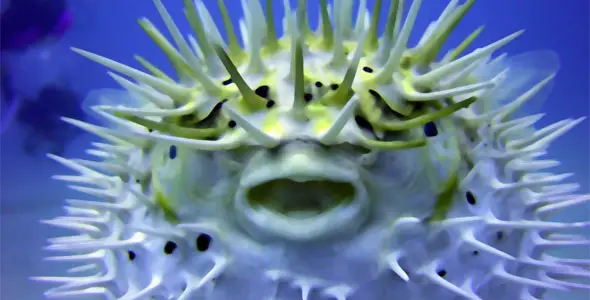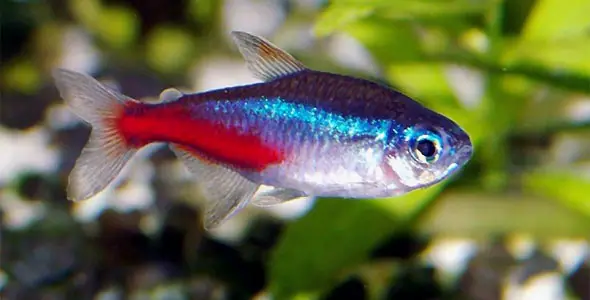While most consider the Pufferfish something reserved for the salty waters of the ocean, there are 29 varieties that are known to live in freshwater, some of which are suitable for the aquarium provided care has been taken to protect them. Similar to the Porcupinefish in that they have hidden spines, Pufferfish also have four large teeth that are used to crush shells. They are generally considered the second most poisonous vertebrates in the world, which means they require extreme caution when being handled or added to a tank and are not for novice or intermediate tank owners. This is a very slow moving fish that would normally attract aggressive attention, however its “puffing” mechanism extends the spines, making it difficult to swallow and those that do manage to swallow it will likely die from the release of toxins.
Sub-Species for Aquariums:
Dwarf (Carinotetraodon travancoricus) – This smallest of the Puffers is an excellent “beginner” Pufferfish. It can successfully be kept with others of its species, does not grow more than one inch in size, and can be kept in a relatively small tank of ten gallons. Dwarf Pufferfish are a yellow color, with dark subdural spots and brighter tiny black freckles.
Fahaka (Tetradon lineatus) – This is not a small fish and not suitable for beginning puffer owners. The Fahaka or Line puffer can grow to be 18 inches and needs a minimum 120 gallons. They are also somewhat aggressive and will taste-test everything, eating what they can.
Target (Monotrete turgidus) – This Pufferfish is somewhat plain. It sports a dreary brown-ish green body with darker spots. It is important to note that this is a highly aggressive puffer species and should not be kept with other tank mates as it may attack often.
Green- Spotted (Tetraodon nigroviridis) – White bellied and lime green bodied, the Green-Spotted Pufferfish is a bright addition to the fresh water aquarium. Though it prefers brackish water it can be kept in a freshwater tank. It receives its name from the black spots along its back.
Care:
Pufferfish should be kept in an aquarium no less than 50 gallons in size with low gravel and water temperatures between 78-82˚F. They may do well with other fish, though caution should be taken as the Pufferfish is toxic and should not be kept with aggressive or potentially aggressive fish. Remember, your pufferfish has teeth and needs regular dental care as well as hard-shelled food such as snails to help keep the teeth filed down. Some varieties may require brackish water, so care should be taken when making a purchase.
Diet:
Pufferfish are carnivores and require a high-protein diet. Though they prefer fresh food such as Rams Horn snails that they can use their teeth to crush, they will also happily eat freeze-dried blood worms or shrimp.
Size: Up to 12 Inches
Freshwater/ Saltwater: Freshwater
Diet: Carnivore
Reef Compatibility: NA
Tank Mate Compatibility:6
Lifespan: Up to 7 Years




